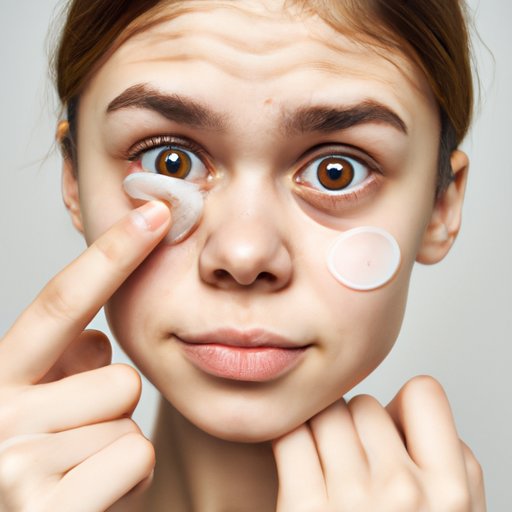
How Do You Get Styes? Understanding Causes, Prevention, and Treatment
Have you ever experienced a painful, red bump on your eyelid? If so, you may have had a stye, a common eye condition caused by bacterial infection. Styes can be uncomfortable and unsightly, but with proper care and treatment, they are usually not serious and can be easily managed. In this article, we will explore the causes, prevention, and treatment options for styes, as well as provide useful tips and insights from medical professionals.
Anatomy of the Eye and Bacteria Entry
Before we dive into the causes of styes, it’s important to understand the anatomy of the eye and its vulnerability to bacterial infections. The eye is a complex organ with many structures that work together to provide vision. However, this complexity also makes it more prone to infection.
Styes, in particular, are caused by Staphylococcus aureus bacteria, which normally reside on the skin but can cause infection if they enter the eye area. This can happen when bacteria from the skin or other surfaces come into contact with the eyes or when the normal balance of bacteria on the eyelids is disrupted.
Habits and Behaviors that Increase Stye Risk
There are several common habits and behaviors that can increase the risk of developing styes. For instance, touching the eyes with dirty hands or not properly cleaning contact lenses can introduce bacteria to the eye area and lead to infection. Similarly, using old makeup or not removing eye makeup before bed can also contribute to bacterial overgrowth and stye formation.
To prevent styes and maintain eye health, it’s important to practice good hygiene and avoid behaviors that may increase the risk of infection. This includes washing your hands frequently, properly cleaning and storing contact lenses, and removing makeup before bed.
Medical Conditions and Stye Risk
Some underlying medical conditions can also increase the risk of styes. For example, blepharitis, a condition characterized by inflammation of the eyelids, can create an environment that favors bacterial growth and stye formation. Similarly, diabetes and other conditions that affect the immune system may also increase the risk of styes.
If you have an underlying medical condition, it’s important to manage it appropriately to reduce the risk of stye formation. This may involve regular check-ups with a healthcare provider, taking medications as prescribed, and maintaining a healthy lifestyle.
Environmental Factors and Stye Occurrence
Environmental factors can also play a role in stye occurrence. For instance, exposure to pollution, allergens, and other irritants can cause inflammation that may contribute to stye formation. To reduce exposure to these factors, it’s important to wear protective eyewear, avoid smoking or being around smokers, and limit exposure to environmental pollutants.
Home Remedies and Self-Care Tips
If you do develop a stye, there are several home remedies and self-care tips that may help alleviate symptoms and speed up the healing process. One of the most effective remedies is applying a warm compress to the affected area for 10-15 minutes, several times a day. This can help reduce inflammation and promote drainage of the stye. Proper eyelid hygiene, including using mild soap and warm water to clean the eyelids, can also help remove bacteria and prevent further infection.
It’s important to note that while home remedies can be helpful, they may not always be enough to treat a stye. In some cases, medical treatment may be necessary to manage symptoms and prevent complications.
Medical Treatment Options
There are several medical treatment options available for styes, depending on the severity of symptoms and underlying causes. Antibiotics, either in the form of eye drops or oral medications, can help kill the bacteria causing the stye and reduce inflammation. In more severe cases, steroid injections or surgical drainage may be necessary.
It’s important to consult with a healthcare provider if you are experiencing symptoms of a stye. They can provide a proper diagnosis and recommend the appropriate treatment for your individual needs.
Interview with a Medical Professional
To gain deeper insights into stye diagnosis, treatment, and prevention, we spoke with a medical professional. Here is what they had to say:
“Styes are a common problem that can be easily managed with appropriate care. If you experience symptoms of a stye, such as redness, swelling, or pain, it’s important to seek medical attention to prevent complications. Home remedies and good hygiene practices can be helpful in managing symptoms, but in some cases medical treatment may be necessary. Regular check-ups with your healthcare provider and proper management of underlying medical conditions can also reduce the risk of stye formation.”
Conclusion
Styes can be uncomfortable and unsightly, but with proper care and treatment, they can be easily managed. By understanding the causes of styes and taking steps to prevent them, you can maintain good eye health and reduce the risk of complications. If you have any concerns about styes or other eye conditions, be sure to consult with a healthcare provider for proper diagnosis and treatment.





